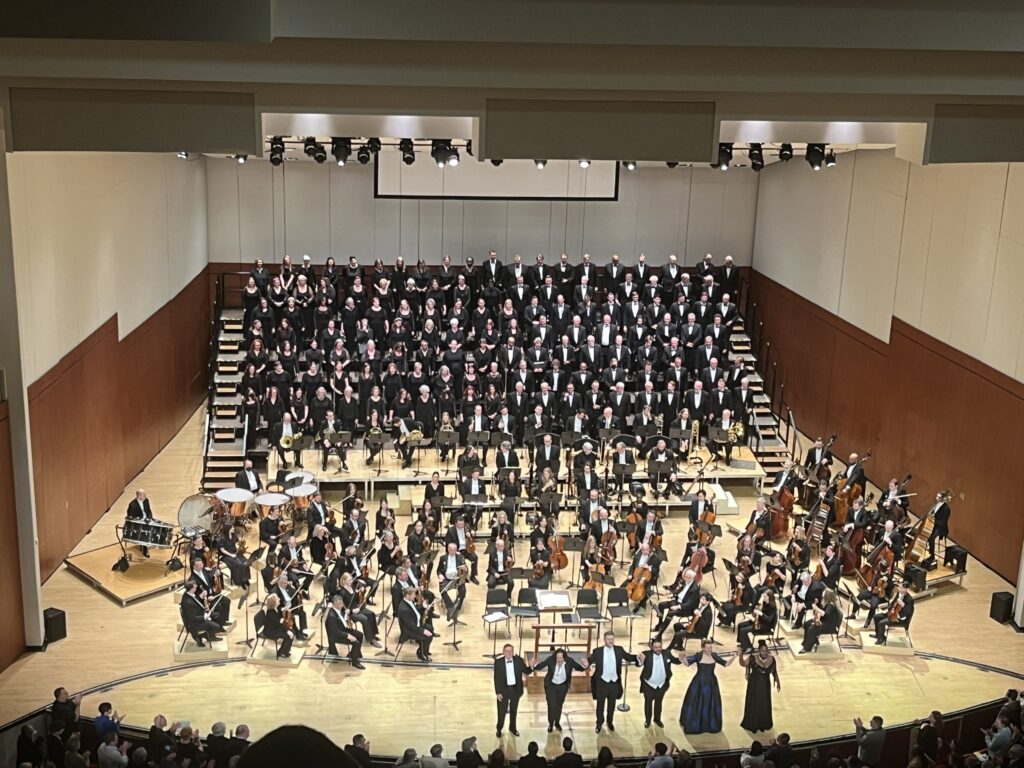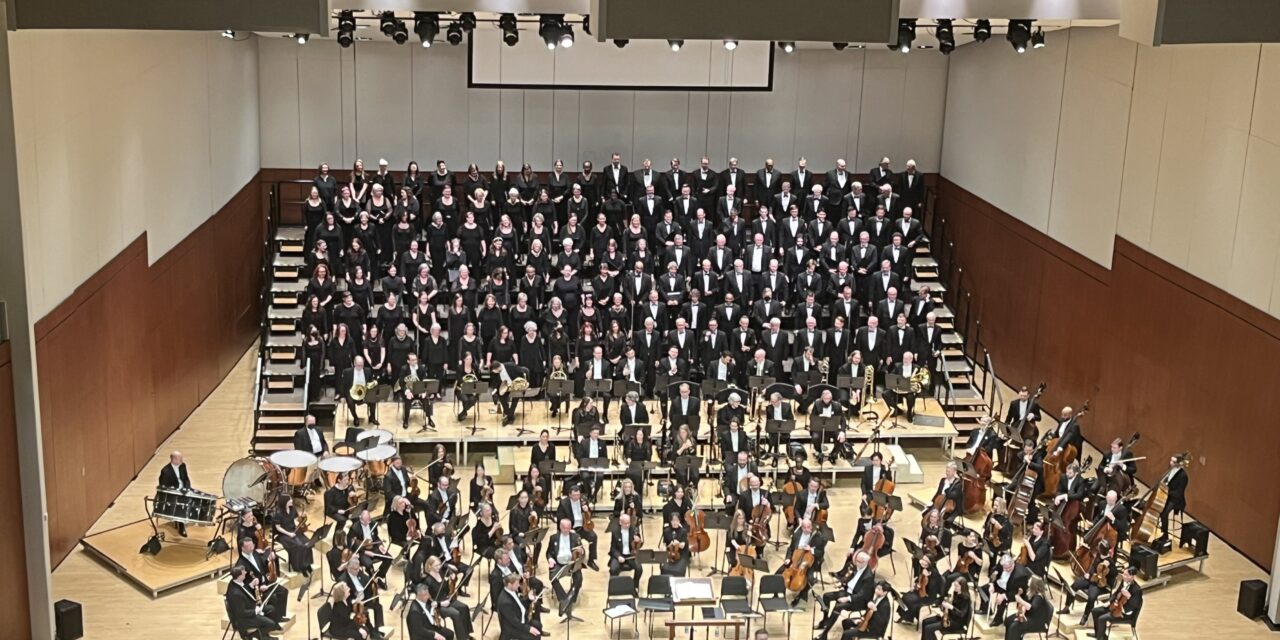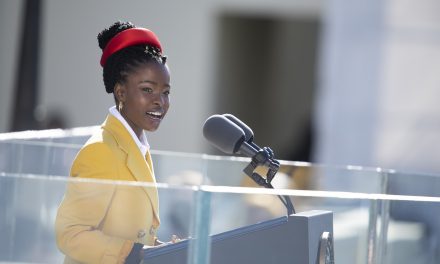
The Atlanta Symphony Orchestra bows after their performance. (Michael Blankfein/Contributing Writer)
Nathalie Stutzmann, Atlanta Symphony Orchestra’s (ASO) music director, lowered her baton on Giuseppe Verdi’s “Messa da Requiem” (1874) (“Requiem”), a mass for the dead, for the last time on Feb. 25. Seconds before she let her arms down, the crowd erupted into a standing ovation.
ASO held three performances of “Requiem” at the Atlanta Symphony Hall over the past weekend. Highlights from Verdi’s mass for the dead include the famous and fiery “Dies irae” (Day of Wrath) and “Sanctus” (Holy), an eight-part choral divide with an explosive finish from the orchestra.
The orchestra and 128-member ASO chorus supported four vocal soloists. Guatemalan tenor Mario Chang ushered in the solo sections of the first movement with soaring high notes. Russian mezzo-soprano Ekaterina Gubanova delivered an impressive counterpoint and melodic exchange with her fellow soloists. Bass singer Ilia Kazakov brought a deep and stable sound that resonated sharply throughout the Atlanta Symphony Hall. These three soloists exercised their most passionate exchange during the penultimate movement, “Lux aeterna” (Light Eternal). The chorus dropped out to make way for an intense conversational moment between them. The instrumental accompaniment was sparse, placing the soloists on full display.
South African soloist Masabane Cecilia Rangwanasha delivered the most gripping performance. The singer stunned the crowd with her soprano range and ultra-high notes.
The four vocalists distributed most of the solo performances of “Requiem” evenly. However, in the final movement, “Libera Me” (Lord, deliver my soul), Rangwanasha alone sang the piece’s final remarks, begging God for deliverance. Her haunting tones overlayed a four-part choral fugue following a reprise of the theme from “Dies irae,” concluding in unison with the chorus as they whisper “Libera Me,” fading into a final C Major chord.
The orchestra also displayed a plethora of talent. Concertmaster David Coucheron led the string sections through perilous runs during the faster movements and deftly navigated the orchestra through its supporting role under the vocalists.
A brooding percussion section anchored the orchestra. The writing of the percussion part in “Requiem” calls for an extra bass drum so that the two can be played at the same time. The drummers each possessed a pair of hard and soft mallets, alternating between sizes to vary the sonic texture of different sections of the piece.
“Requiem” also contains a fanfare duet with two offstage trumpet players, one on each side of the concert hall’s balcony. This moment in the piece astonished the audience and built up to a climactic vocal belt from the chorus in “Dies irae.”
Verdi first began working on the piece in 1868. The first movement he wrote was the finale, “Libera Me.” Verdi intended to use the movement in a collaborative tribute to his late fellow Italian composer, Gioachino Rossini, of “The Barber of Seville” (1816) notoriety. Unfortunately, the tribute fell through, but Verdi decided to repurpose “Libera Me” for his full-length mass that we know today.
Of course, masses for the dead will contain morose lyricism. Even then, “Requiem” stands out as particularly fearful. As a comparison, Wolfgang Amadeus Mozart’s famous requiem mass, “Requiem in D minor, K. 626 (1791-92)”, ends in a communion movement. While still plenty of haunting moments linger, audiences often interpret Mozart’s piece as one about life as well as death. Although incomplete when Mozart passed, the work was finished by one of his students with the permission from Mozart’s wife. By contrast, Verdi’s requiem concludes with the soprano pleading alone as she dissolves into the murmur of the ensemble.
The bittersweet ending didn’t sour the audience’s reaction; ASO’s performance of Verdi’s masterwork was an absolute triumph. Stutzmann, as well as the soloists, returned to the stage to bow amidst raucous applause. Stutzmann graciously shook the hands of each principal and assistant principal musician before exiting the stage at last.
Michael Blankfein (24C, he/him) is from Westport, Connecticut, majoring in Anthropology. He is also a violist in the Emory University Symphony Orchestra. He’s a huge music nerd, plays a ton of video games, and loves murder mysteries.





